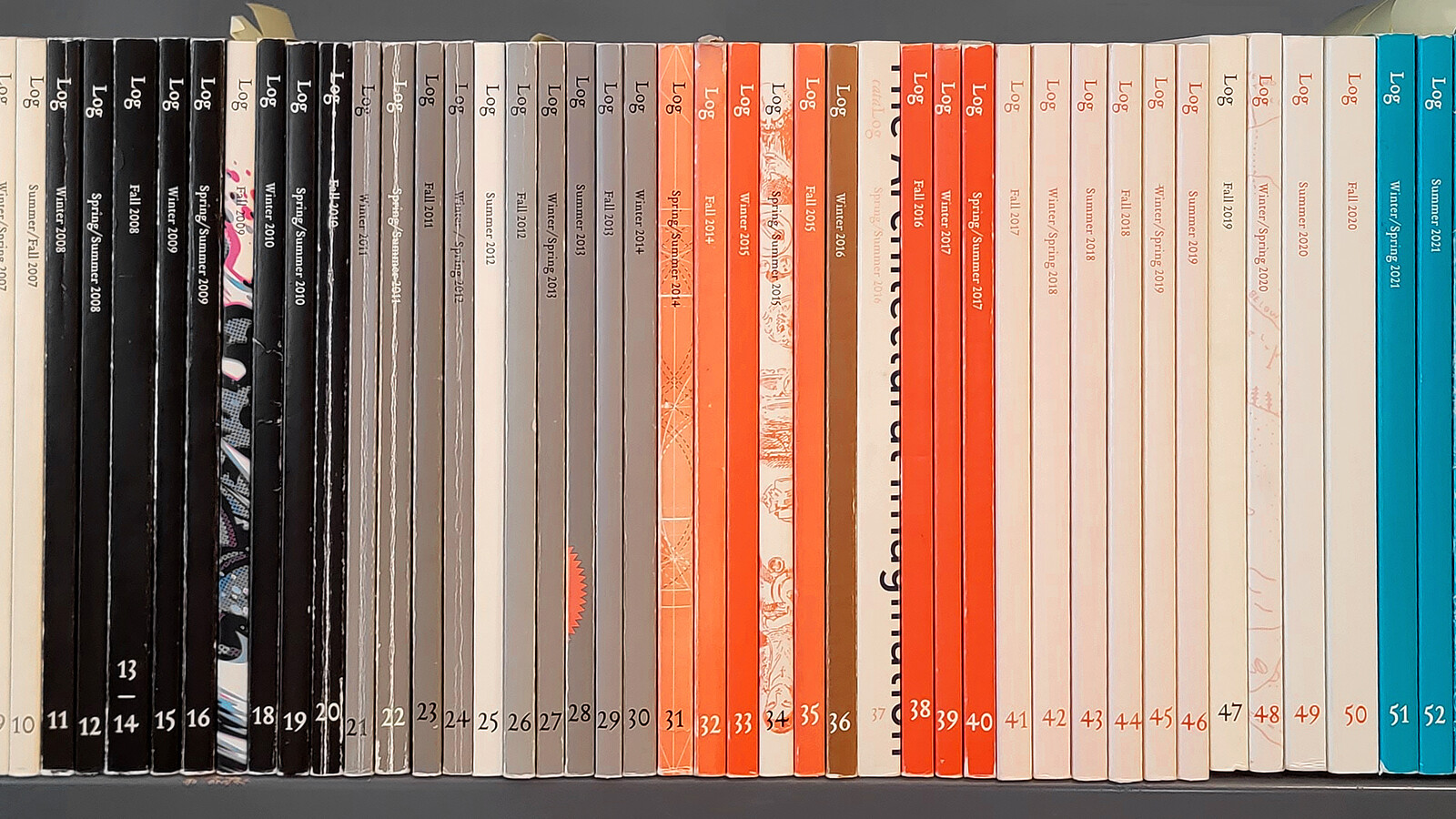Twenty years ago today, September 30, 2003, the first issue of Log was launched at Urban Center Books on Madison Avenue in New York City. Like a ship’s log, the new journal set out to observe and record architecture discourse and the built environment in a literary format, promoting writing in and on architecture over architectural images. As editor Cynthia Davidson wrote in that issue:
“A log, by definition, is a way of recording observations of the present through writing in time. Seen against the backdrop of a culture of images and rhetoric, and in its distance from both the academy and mass media, Log offers the possibility of a critical context for writing about architecture today—for observing its movement or lack thereof, its images, its texts, and its subtexts. In the complexity of these times, this writing, these observations, may begin to define not only where architecture is moving, but where we too, the observers, are headed.”
From Log 1 to Log 58, these cumulative pages—all 9,420 of them!—present a generation of developing ideas. While some of architecture’s concerns have changed radically, others remain pertinent and persistent. Over two decades Log has proved to be a flexible and resilient platform for bringing together both new and established voices in productive critical dialog. To celebrate this dialog, Log 59, forthcoming this fall, gathers new interviews conducted by the 20-plus guest editors over Log’s history, including Darell Wayne Fields, Mark Foster Gage, Ana Miljački, Mónica Ponce de León, R.E. Somol, and Sarah Whiting.
In addition to Log 59, to mark this momentous anniversary five unopened, complete sets of Log—a rarity—are now available for purchase. To inquire about costs, write to log [at] anycorp.com. And for the next ten days, until October 10, 2023, all available back issues and PDF copies of Log will be available for the original 2003 price of just ten USD! Visit here to order.
*Image above: Log 1 launched on September 30, 2003. Twenty years later, this collection of observations on architecture and the contemporary city now represents a generation of critical discourse.



